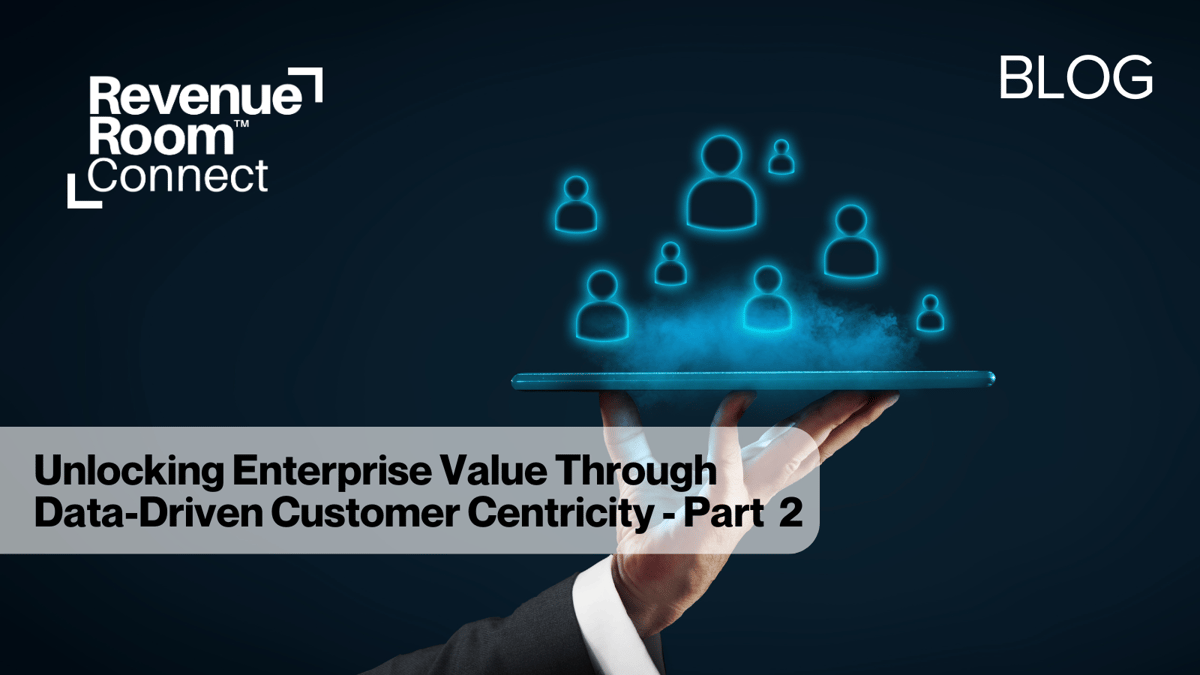Unlocking Enterprise Value through Data-Driven Customer Centricity Part 2
(If you have not yet, please see Part 1 of this series on customer centricity)
How Data-Driven Customer Strategies Drive Revenue Growth and Business Value in Complex B2B Markets
In today's data-rich business environment, the companies that thrive aren't just the ones with the best products or the largest market share—they're the ones that truly understand and serve their customers. The numbers tell a compelling story: customer-centric companies are 60% more profitable than their competitors, yet many organizations struggle to fully embrace and implement customer-centric strategies, particularly in complex B2B environments.
The Business Case for Customer Centricity
The impact of customer centricity on business performance isn't just theoretical—it's backed by hard data that demonstrates clear financial returns:
Revenue and Profitability
Companies that lead in customer experience outperform their competitors by nearly 80% in revenue growth. Even more striking, 84% of companies that invest in improving their customer experience report significant revenue increases. These aren't just incremental gains—they represent transformative business growth.
The Retention Advantage
Consider this: increasing customer retention by just 5% can boost profits by 25-95%. When you compare this to the fact that acquiring a new customer costs 5-25 times more than retaining an existing one, the business case becomes crystal clear. This advantage becomes even more pronounced in B2B markets, where relationships are complex and switching costs are high.
Lifetime Value Impact
The math is compelling: loyal customers are worth up to 10 times their initial purchase value. With existing customers showing a 60-70% likelihood of making additional purchases compared to just 5-20% for new prospects, the focus on customer centricity becomes not just a service philosophy but a critical business strategy.
The Six Pillars of Customer Centricity
1. Strategic Mindset
Gone are the days of treating customer service as just a department. Today's successful organizations embed customer focus into every interaction, following the 75/25 rule: 75% of communications should deliver value, while only 25% should be promotional. This shift requires fundamental changes in how we think about customer relationships.
2. Data-Driven Personalization
True personalization goes far beyond adding a customer's name to an email. It means:
- Analyzing behavioral patterns to predict needs
- Tailoring solutions based on specific business contexts
- Using predictive analytics to anticipate challenges
- Creating customized experiences across all touchpoints
3. Business Empathy
Understanding your customer's business is as important as understanding your own. This means:
- Developing deep industry knowledge
- Mapping customer journeys comprehensively
- Identifying pain points before they become problems
- Creating solutions that address underlying business challenges
4. Relationship Economics
In the B2B space, customer relationships are long-term investments. Success requires:
- Focused account management strategies
- Proactive problem resolution
- Regular value-add touchpoints
- Strategic growth planning with key accounts
5. Organizational Alignment
Customer centricity fails without complete organizational buy-in. Essential elements include:
- Clear roles and responsibilities
- Cross-functional collaboration
- Aligned incentives across departments
- Consistent measurement frameworks
6. Leadership Engagement
Executive involvement in customer relationships sends a powerful message and provides crucial insights. This includes:
- Regular customer advisory board meetings
- Executive sponsorship of key accounts
- Direct participation in strategic customer initiatives
- Customer-centric KPIs in executive dashboards
Navigating Complexity in Multi-Sided Business Models
The Stakeholder Balance
In complex B2B environments, particularly in media and events, success requires balancing diverse stakeholder needs. For example, a trade show organizer must simultaneously satisfy:
- Attendees looking for value
- Sponsors requiring visibility
- Partners needing strategic alignment
Technology Integration
Modern customer centricity requires sophisticated data integration. Key focus areas include:
- Creating unified customer views across systems
- Maintaining data quality and governance
- Ensuring privacy compliance
- Enabling real-time data access and analysis
Revenue Stream Optimization
Managing diverse revenue streams requires:
- Coordinated pricing strategies
- Integrated value propositions
- Clear customer segmentation
- Balanced resource allocation
Implementation Roadmap
Phase 1: Foundation (Months 1-3)
- Audit current customer data and systems
- Establish baseline metrics
Phase 2: Activation (Months 4-6)
- Implement data integration
Phase 3: Optimization (Months 7-12)
- Scale successful initiatives
- Deepen analytics capabilities
Measuring Success
Track these key metrics to gauge progress:
- Customer Satisfaction Score (CSAT)
- Customer Lifetime Value (CLV)
Conclusion: The Path Forward
The shift to true customer-centricity is not a project—it's a transformation. While the challenges are real, particularly in complex B2B environments, the potential returns make it an essential journey. Success requires commitment, a clear vision, and a systematic approach to implementation.
Start by identifying one area where improved customer centricity could have immediate impact. Use the frameworks provided here to develop a focused pilot program. Measure results, learn from the experience, and scale what works. Remember: the goal isn't perfection, but progress toward a more customer-centric organization.




